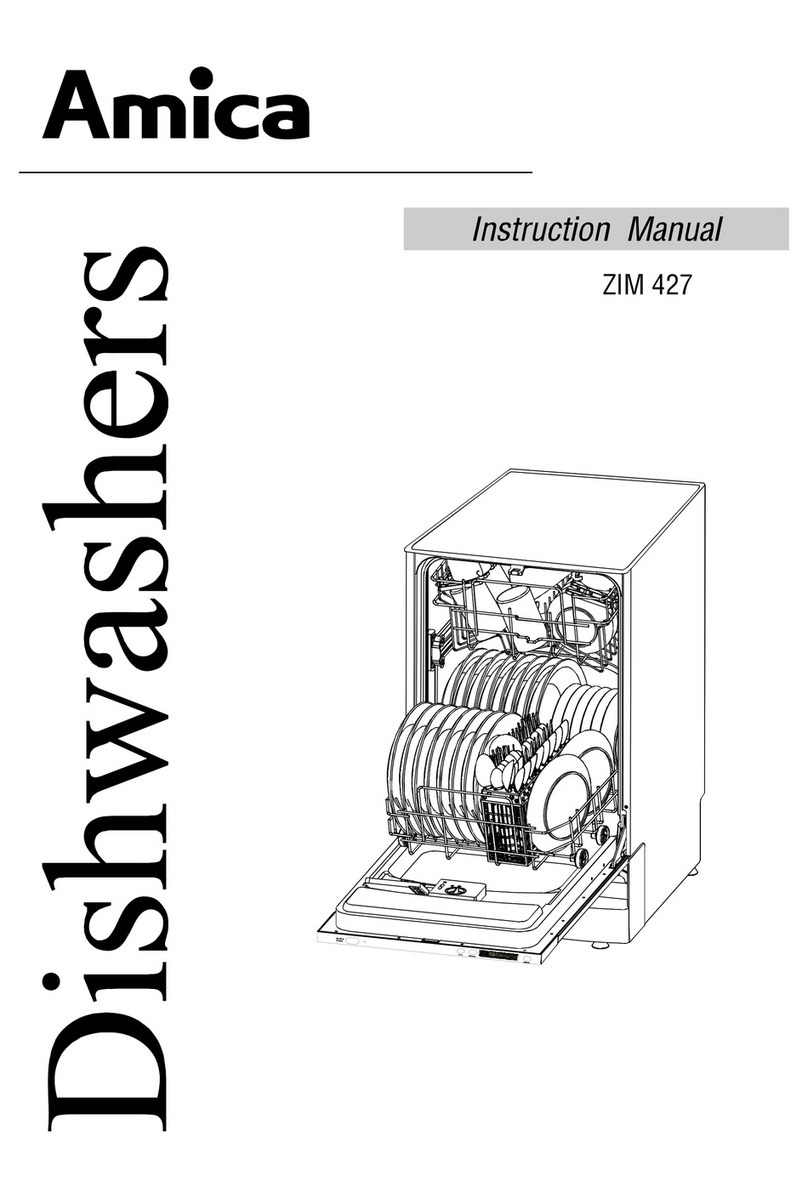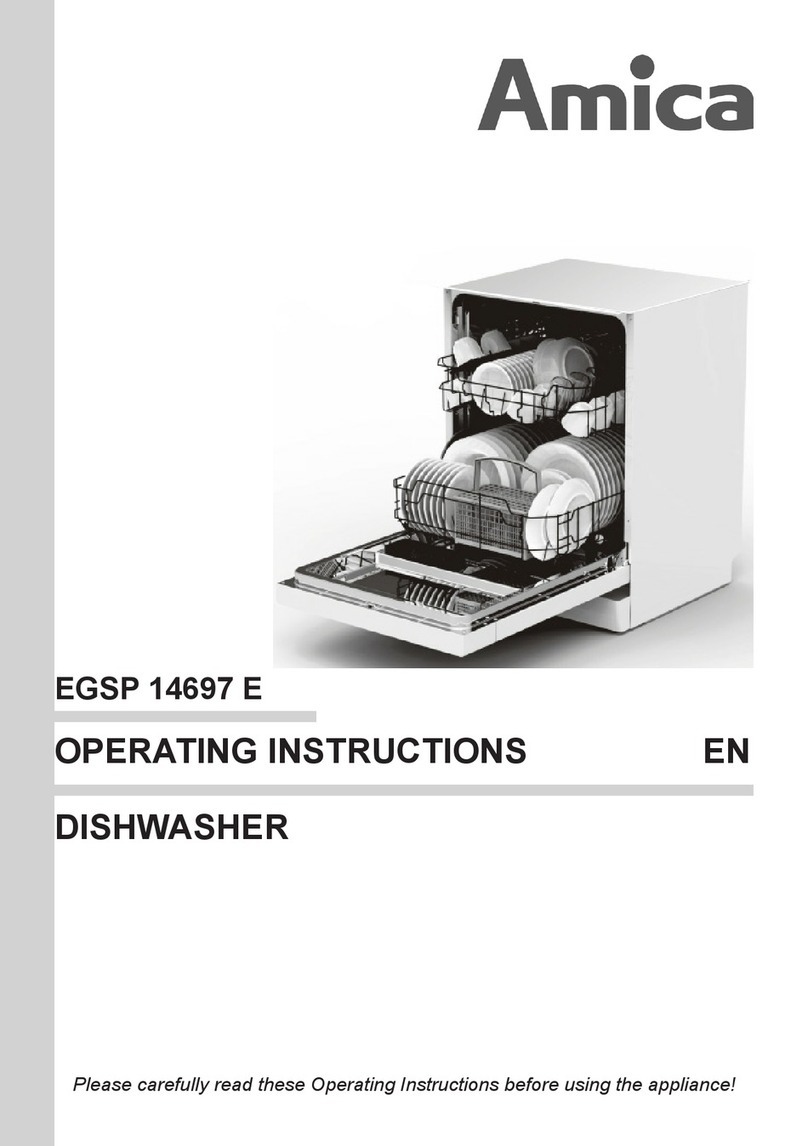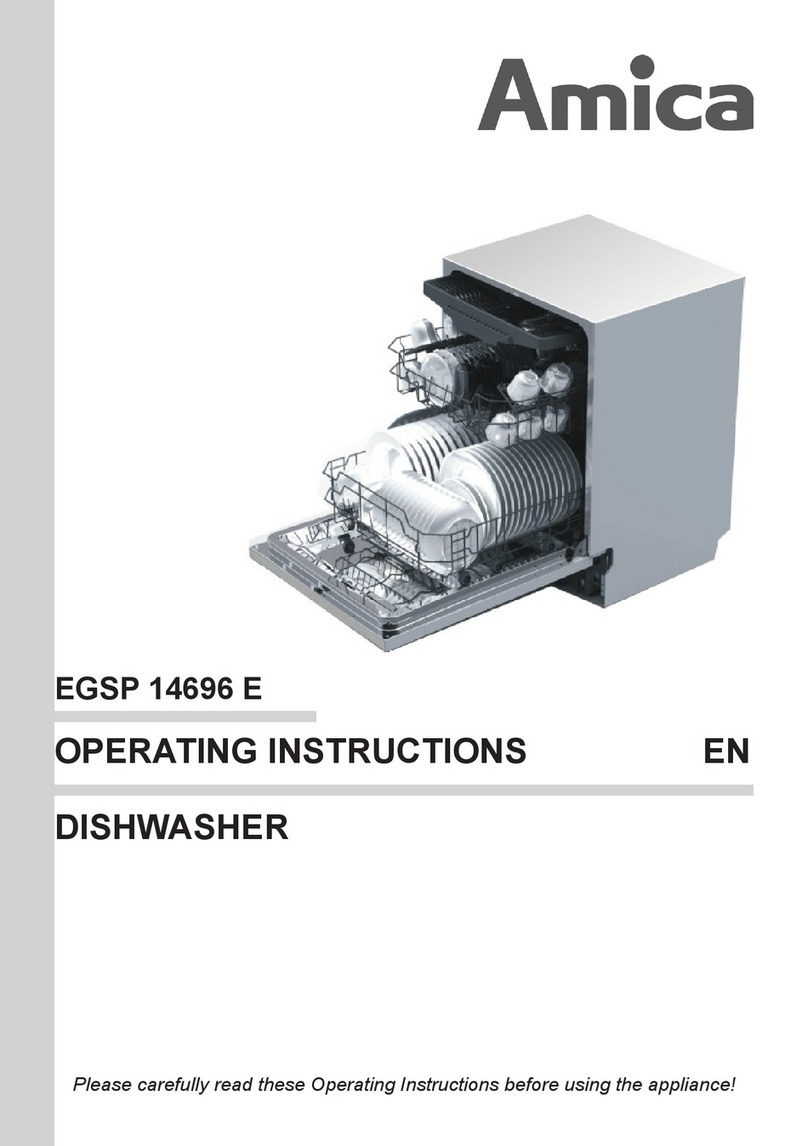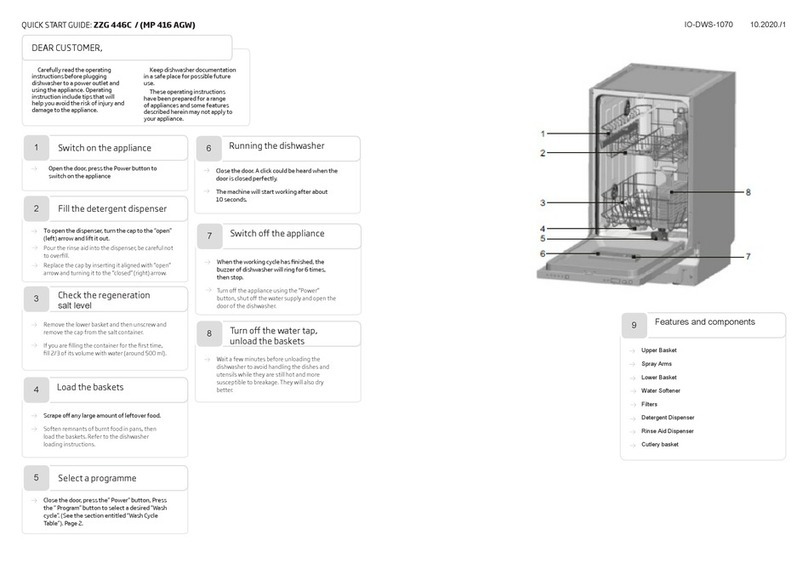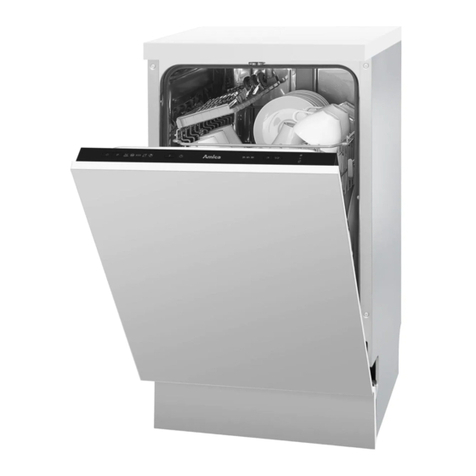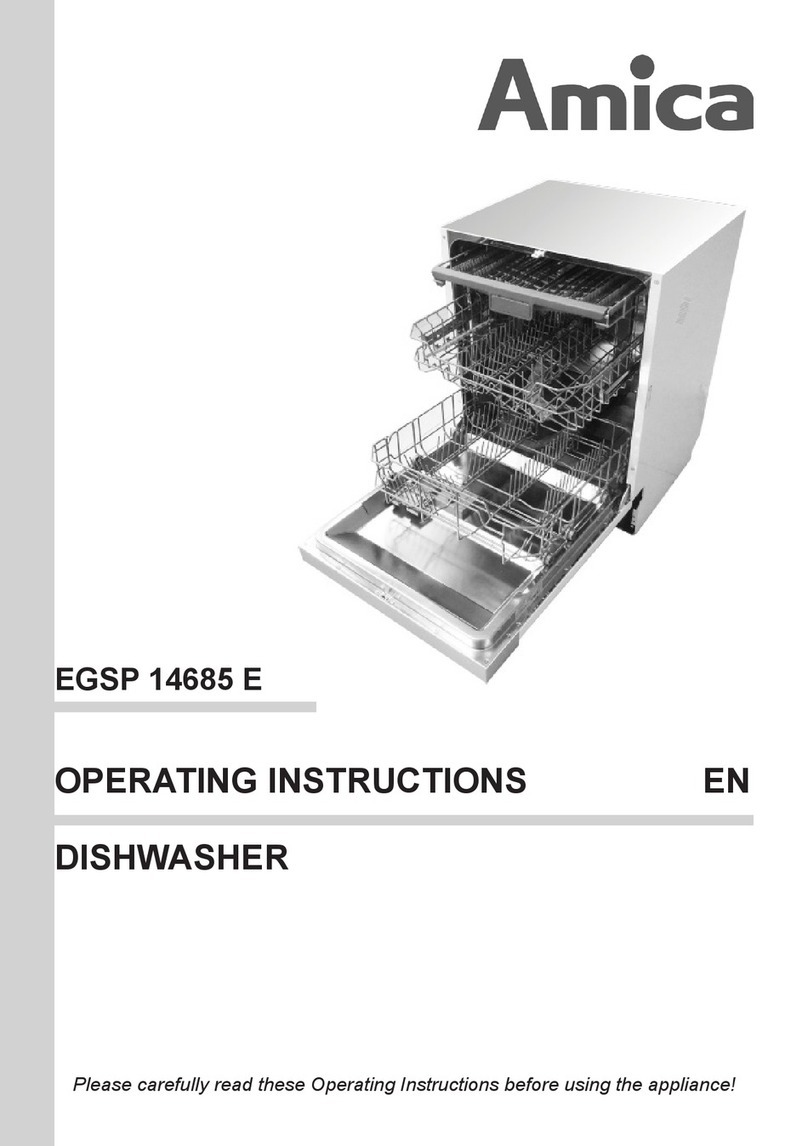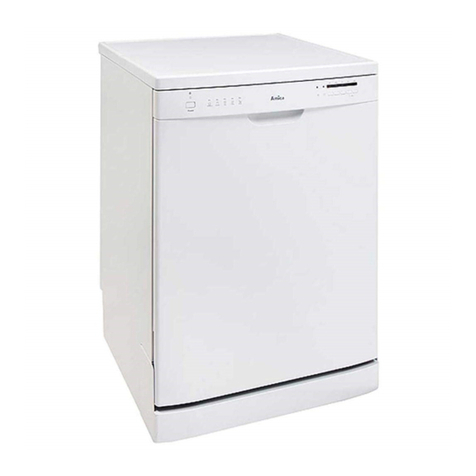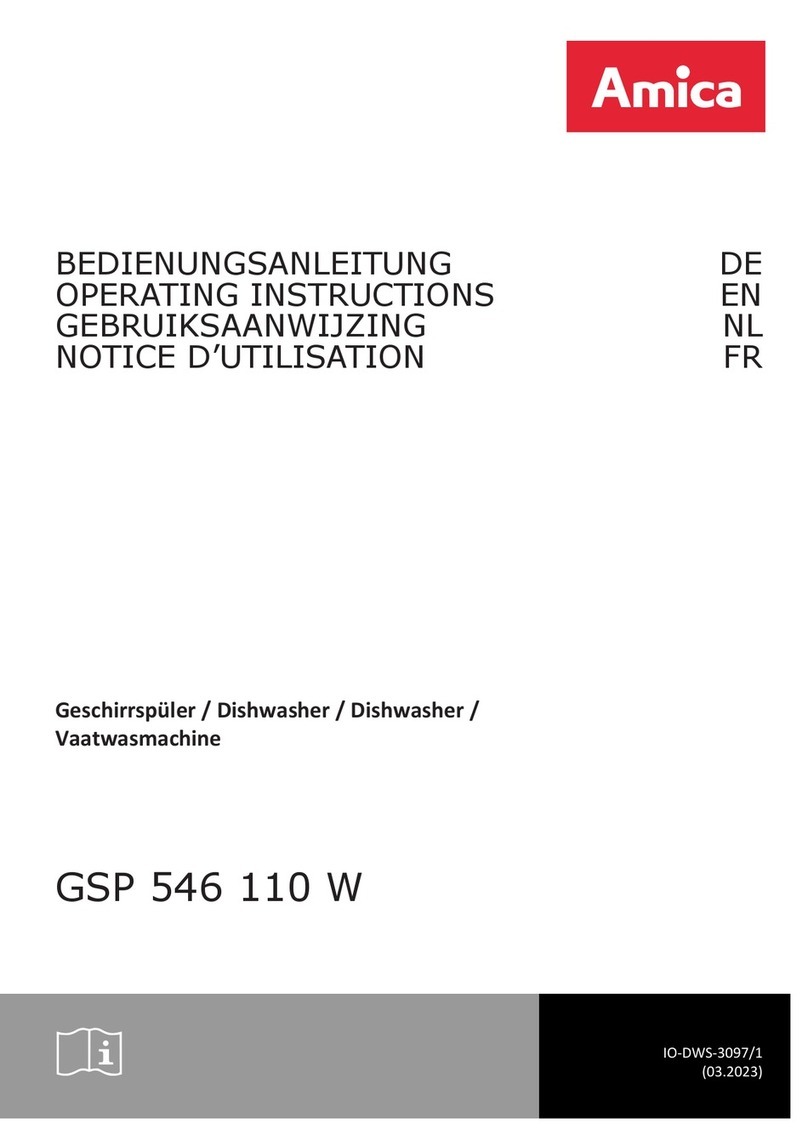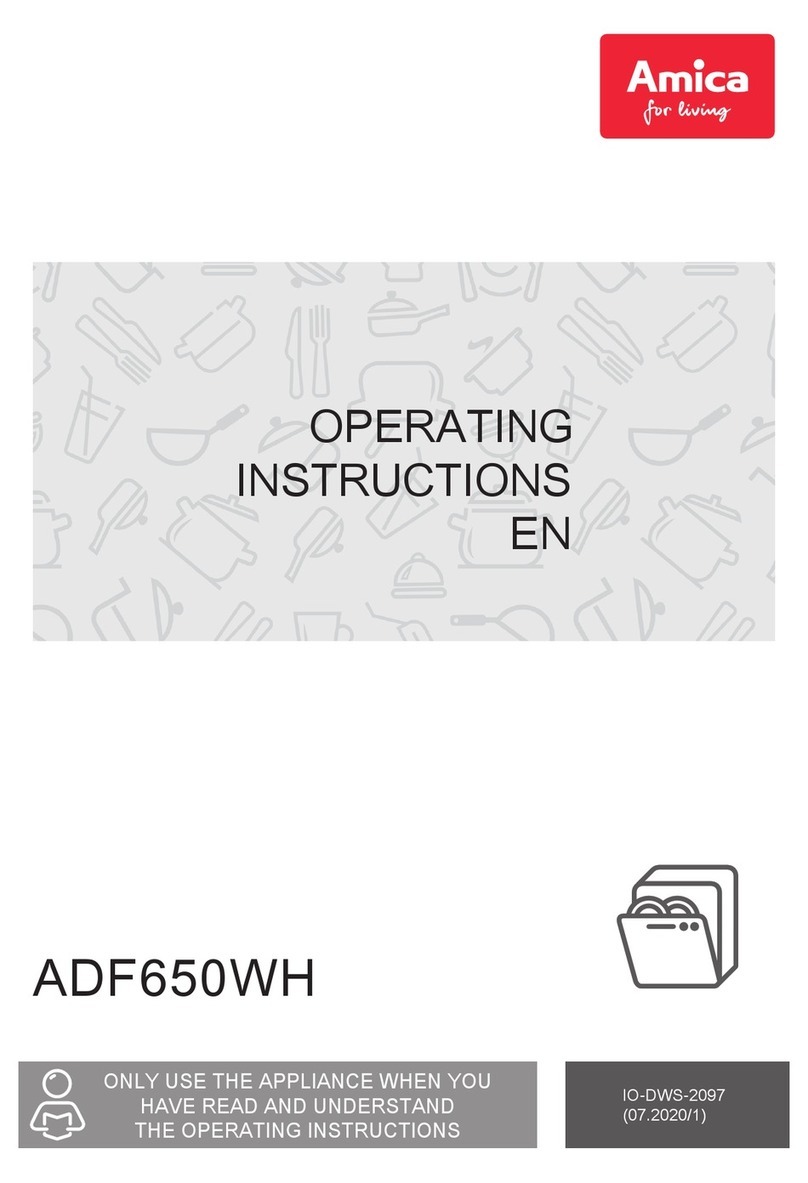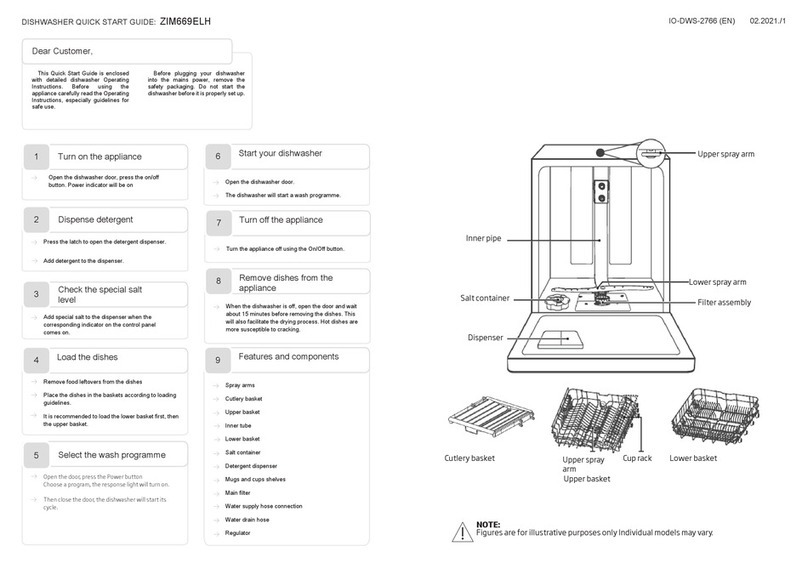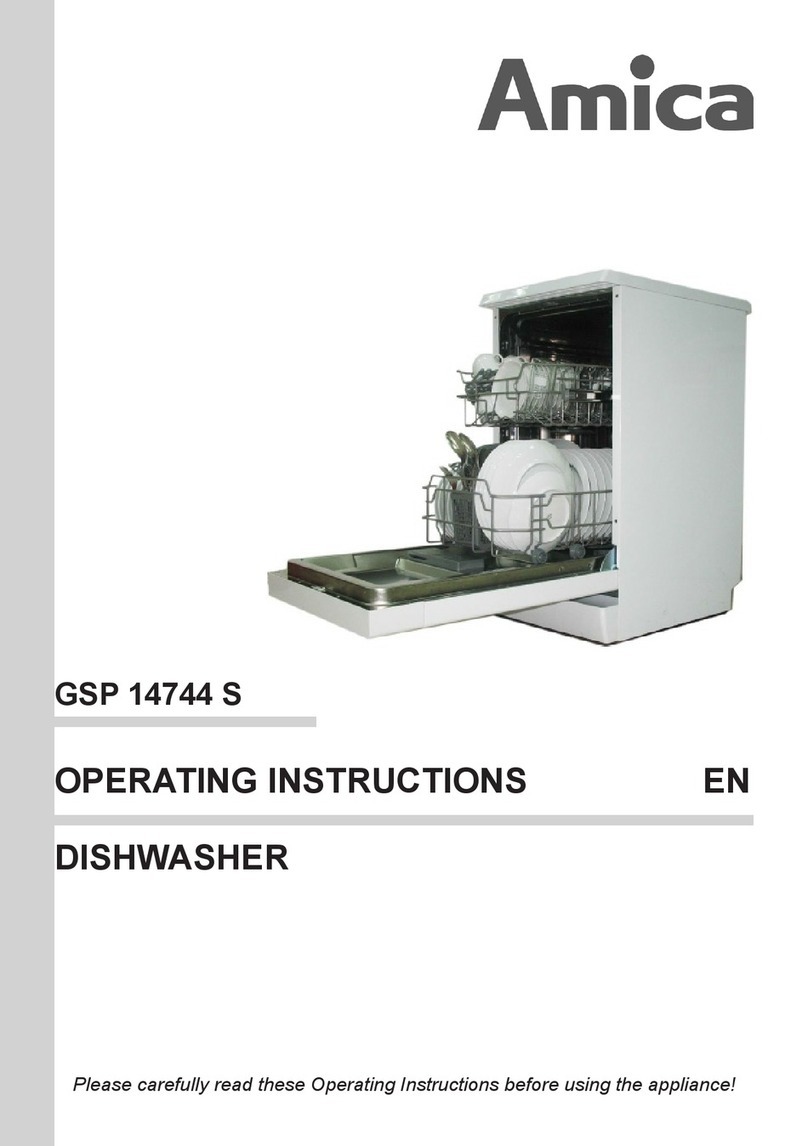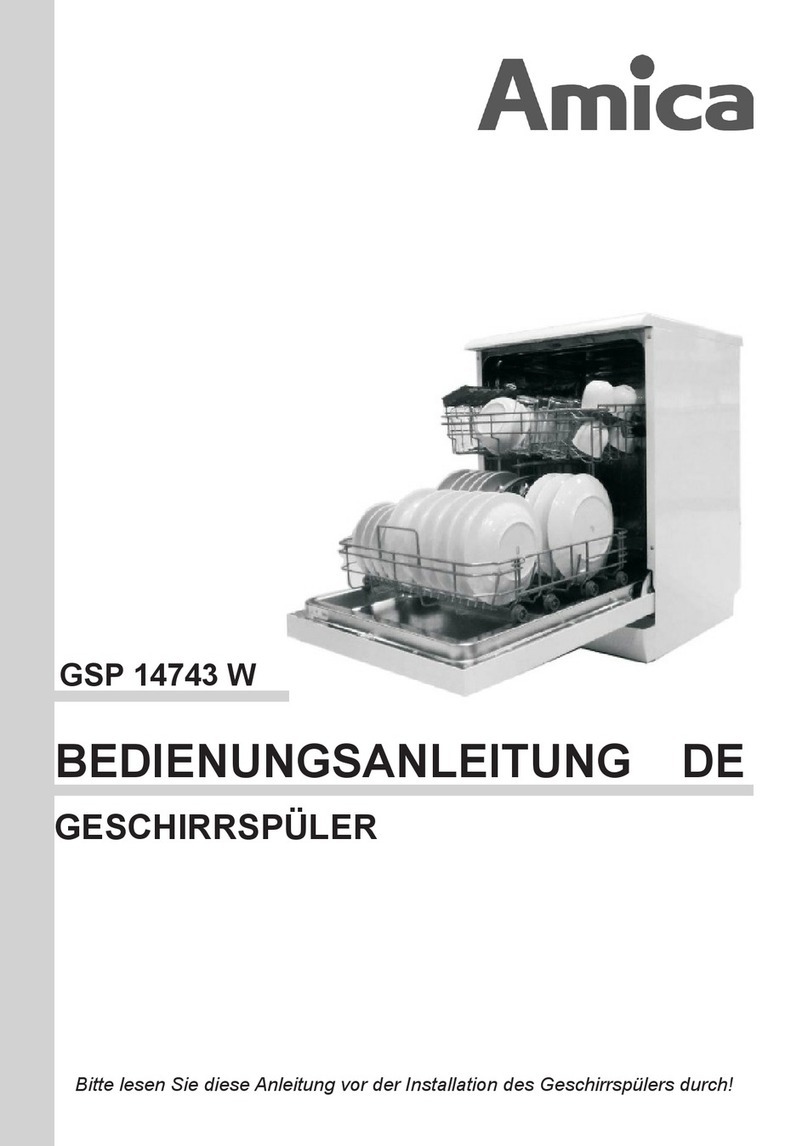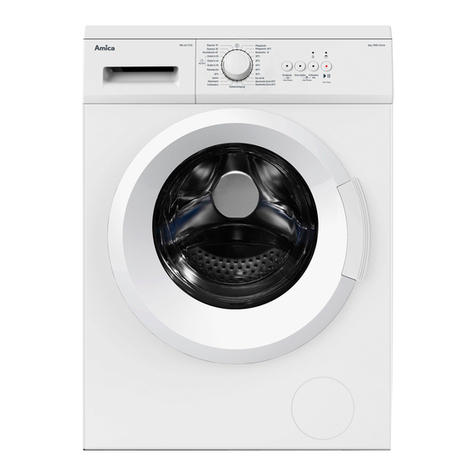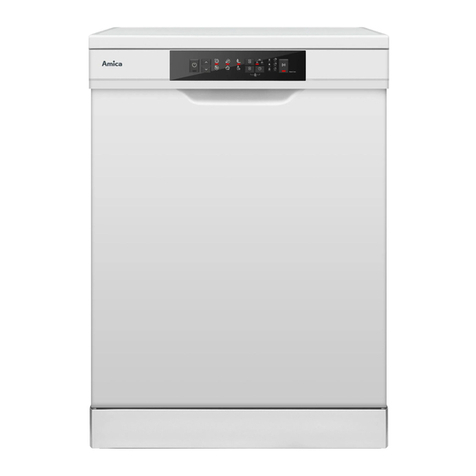7
INSTALL THE APPLIANCE
Placement of the product
• When choosing the place of installation,
make sure you will be able to easily load and
remove dishes and utensils from the dish-
washer.
• Do not place the appliance in a room where
the temperature can fall below 0°C.
• Before installing unpack the appliance follow-
ing the instructions on the packaging.
• Place the appliance close to the water valve
and drain. When installing the dishwasher as-
sume that the connection will not be changed.
• When you move the appliance do not handle it
by the door or control panel.
• Leave some room on all sides to have
convenient access to the dishwasher when
cleaning.
• Make sure that when you set the dishwasher
you do not crush the water supply and drain
hose. Also, make sure that the appliance is
not places on the power cord.
• Level the appliance using the adjustable legs.
Proper level ensures trouble-free opening and
closing the dishwasher doors.
• If the dishwasher door will not close properly,
check that the appliance stands rmly on the
oor, if not, adjust using the adjustable legs.
Water supply connection
Make sure that domestic water supply system is
suitable for the dishwasher. It is recommended
to install a lter in the water supply line to avoid
damage to the appliance due to impurities (such
as sand, clay, rust, etc.) that occasionally occur in
water. This will also prevent accumulation of sedi-
ment after dishwashing.
Water supply hose
Do not use the water supply hose from the old
dishwasher. Use the new water supply hose
provided with the appliance. Before connecting,
rinse the hose with water. Connect the water sup-
ply hose directly to the
water feed valve. The
domestic water system
pressure should be at
least 0.03 MPa and up
to 1 MPa. If the water
pressure exceeds 1
MPa, install pressure
reducing valve.
When the connection is
ready, open the valve
completely and check
for leaks.
For safety reasons,
close the water supply
tap after every wash.
NOTE: Aquastop water supply is used in
some dishwasher models. Dangerous volt-
age could occur with Aquastop. Do not cut
the Aquastop water supply. Do not allow it
to bend or twist
The drain hose
The drain hose can be connected directly to a
water drain or kitchen sink stub pipe. You can also
drain the water directly into the sink using the spe-
cial bracket (if available), placing the drain hose
outlet on the kitchen sink edge. The drain hose
connection should be made at least 50 cm and up
to 110 cm from the oor.
If the drain hose is longer than 4 m, dishes
may not be washed properly. The manu-
facturer is not be held responsible for such
a situation
Important!
For safety reasons, close the water tap
after every wash
